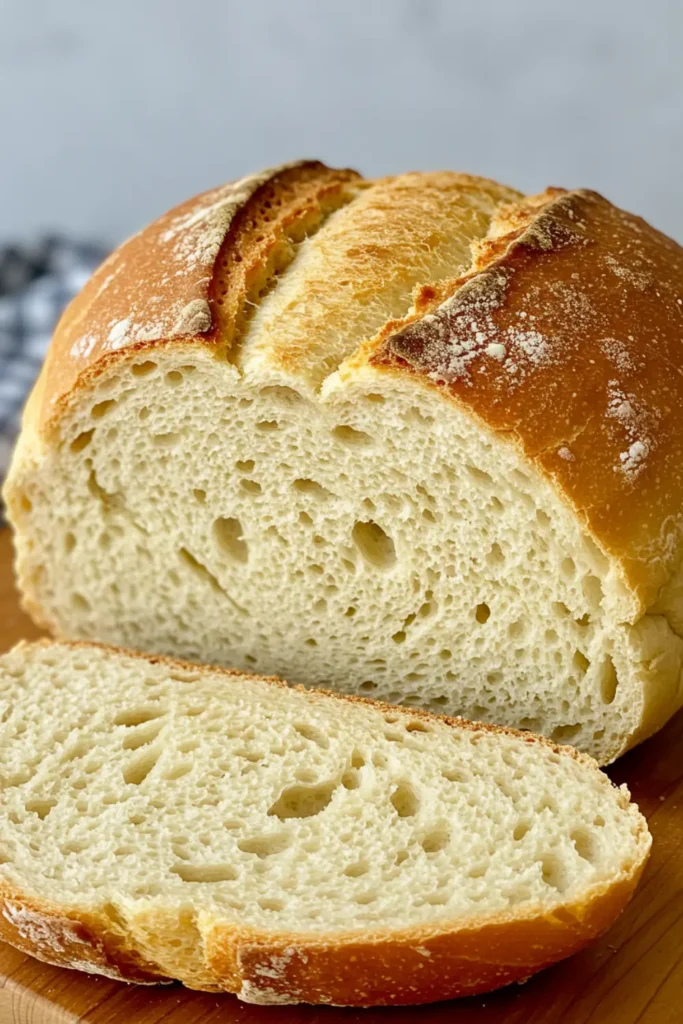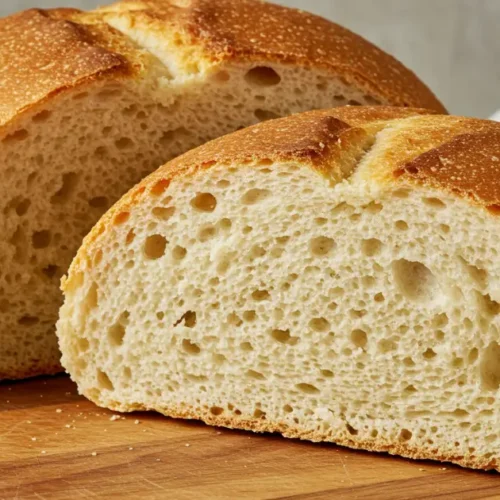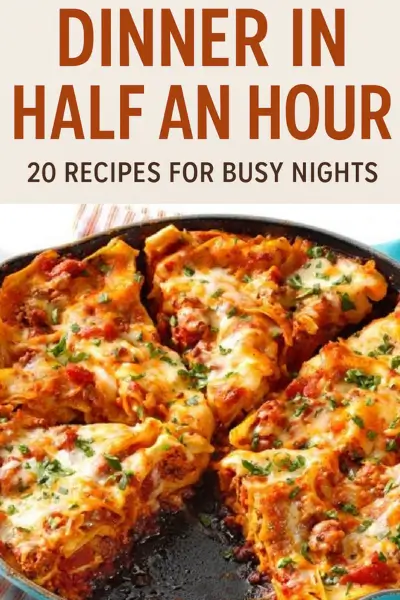Potato bread is soft, fluffy, and perfect for any occasion. The potatoes give it a tender, moist texture that makes it stand out from regular bread. Whether you’re making sandwiches or just enjoying a warm slice with butter, this recipe is easy to follow and guarantees delicious results.
Why We Love This Potato Bread
Potato bread is more than just another loaf—it’s a comforting, flavorful treat that you’ll want to make again and again. Here’s why this recipe is a winner:
- Incredibly Soft Texture: The secret to this bread’s soft, fluffy texture lies in the potatoes. They add moisture to the dough, creating a loaf that’s light yet hearty. Whether you’re using it for sandwiches or enjoying it warm with butter, each bite melts in your mouth.
- Simple Ingredients, Big Flavor: You don’t need a long list of complex ingredients to make this bread. Just potatoes, yeast, flour, and a few basics come together to create something truly delicious. It’s the kind of recipe that feels both special and easy at the same time.
- Perfect for Beginners: If you’re new to baking bread, this recipe is a great place to start. The process is straightforward, with clear steps for mixing, kneading, and rising. Plus, the dough is forgiving, making it easier to work with.
- Versatile for Any Meal: From classic sandwiches to serving alongside soups and stews, potato bread is incredibly versatile. It’s the kind of bread you can pair with almost anything, making it a must-have for your homemade bread rotation.
- A Family Favorite: There’s something about fresh, homemade bread that brings everyone together. The scent alone fills your home with warmth and comfort, creating the perfect environment for family meals or cozy moments.

Ingredients for Potato Bread
Making potato bread at home is simple, and with just a few key ingredients, you’ll be on your way to baking a delicious loaf. Here’s what you’ll need:
Potatoes – The key to making potato bread soft and moist. Use about 1 ½ cups of mashed potatoes.
Active Dry Yeast – Helps the bread rise and gives it that light texture.
Sugar – Activates the yeast for the perfect rise.
All-Purpose Flour – Provides structure to the bread. Use 4 cups for the best texture.
Salt – Enhances the flavor without making the bread salty.
Butter (melted) – Adds richness and moisture to the bread.
Olive Oil – Used to grease the bowl and help keep the dough soft.
Instructions for Making Potato Bread
Now that you have your ingredients ready, let’s walk through the process of making this delicious, fluffy potato bread. Follow these easy steps, and you’ll have a beautiful loaf to enjoy in no time.
Prepare the Potatoes
Peel, chop, and boil the potatoes until soft (10–12 minutes). Drain and mash them. Let them cool slightly.
Activate the Yeast
Mix 1 cup warm water, sugar, and yeast in a bowl. Let it sit for 5–10 minutes until frothy.
Mix the Dough
In a large bowl, combine 4 cups flour and salt. Add mashed potatoes, melted butter, and the yeast mixture. Stir until the dough comes together.
Knead the Dough
Knead the dough on a floured surface for 8–10 minutes until smooth and elastic. Add more flour if necessary.
First Rise
Place the dough in a greased bowl, cover with a towel, and let it rise for 1 hour, or until doubled in size.
Shape the Dough
Punch down the dough, shape it into a loaf, and place it on a greased pan.
Second Rise
Cover and let the dough rise for another 30 minutes.
Bake the Potato Bread
Preheat the oven to 375°F (190°C). Bake for 25–30 minutes until golden and hollow when tapped.
Cool and Enjoy
Let the bread cool on a wire rack for 15 minutes before slicing. Enjoy!
Pro Tips for Perfect Potato Bread
Making potato bread is a rewarding process, and with these pro tips, you can ensure your loaf turns out perfectly every time. Whether you’re a beginner or an experienced baker, these insights will elevate your bread-making skills.
Use Warm (Not Hot) Water for Yeast
When activating the yeast, make sure the water is warm, around 110°F (45°C). Too hot, and it can kill the yeast, leading to a dense loaf. If it’s too cool, the yeast may not activate properly, slowing the rise. A thermometer can help you get it just right.
Perfectly Mashed Potatoes
For the best texture, mash the potatoes until smooth and lump-free. If you use a potato ricer, the potatoes will be even fluffier. Avoid adding too much liquid to the mash, as extra moisture can make the dough too wet.
Kneading Tip for Soft Bread
When kneading, don’t add too much flour. The dough should be slightly sticky but manageable. If the dough is too dry, it won’t achieve that perfect soft texture. Use a light touch, and keep the dough moving—this builds the gluten, giving your bread its airy structure.
Check for Dough Readiness
A simple test to know if your dough has been kneaded enough: perform the “windowpane test.” Take a small piece of dough and stretch it between your fingers. If it stretches thin without tearing, it’s ready for its first rise.
Don’t Skip the Rising Time
Be patient during the rising stages. The dough needs time to ferment, which helps develop the bread’s flavor and texture. If you’re in a rush, consider placing the dough in a warm, draft-free area, like an oven with just the light on, to speed up the process without compromising the results.
Get a Golden Crust
For a beautiful golden-brown crust, brush the top of the dough with a little melted butter before baking. It adds a subtle richness and a lovely shine, making your potato bread even more irresistible.
Storage for Freshness
Once baked, let the bread cool completely before storing it. For the freshest bread, keep it in a sealed container or bread box. If you don’t plan to finish the loaf within a few days, you can freeze it for later use. Simply slice before freezing and toast individual slices as needed!
Variations of Potato Bread
One of the best things about potato bread is its versatility. While the classic version is delicious on its own, there are plenty of ways to tweak the recipe to suit your taste or dietary preferences. Here are a few exciting variations you can try!
Herb-Infused Potato Bread
Add flavor and aroma to your loaf by incorporating fresh herbs like rosemary, thyme, or parsley. Simply chop the herbs finely and mix them into the dough before the first rise. The herbs will infuse the bread with a savory depth, making it a great accompaniment to soups or stews.
Cheesy Potato Bread
Who doesn’t love cheese? For a cheesy twist, fold in shredded cheddar or Parmesan cheese into the dough before kneading. You can also sprinkle some cheese on top of the loaf before baking for a crispy, cheesy crust. This variation makes a fantastic snack or side dish.
Sweet Potato Bread
Swap regular potatoes for sweet potatoes to create a slightly sweeter, richer bread with a lovely golden color. Sweet potatoes add moisture and a natural sweetness to the dough, and you can even spice it up with a dash of cinnamon or nutmeg for extra flavor.
Serving Suggestions for Potato Bread
Potato bread is not just a delicious loaf; it’s incredibly versatile and can be paired with a variety of dishes. Whether you’re enjoying it for breakfast, lunch, or dinner, there are countless ways to make this bread shine on your table. Here are some serving ideas to help you make the most of your freshly baked loaf.
Classic Butter Spread
Sometimes, the simplest things are the best. Slice your potato bread and spread a generous layer of butter on top while it’s still warm. The soft, fluffy texture of the bread combined with creamy butter creates a comforting treat. You can also try adding a sprinkle of sea salt or a drizzle of honey for a sweet contrast.
Potato Bread Sandwiches
Potato bread’s light and fluffy texture makes it an ideal choice for sandwiches. Fill it with your favorite deli meats, cheeses, and veggies. Try a classic turkey and cheese sandwich, or for something heartier, load it up with roast beef, caramelized onions, and a dollop of mustard.
Soup Sidekick
Pair slices of your potato bread with a hot bowl of soup for the perfect meal. Its soft and absorbent texture makes it perfect for dipping into tomato soup, chicken noodle, or even a creamy potato leek soup. If you’ve made a savory version of potato bread with herbs or garlic, it complements soups even better.
More Bread recipes you will love!
FAQs About Potato Bread
Here are some frequently asked questions to help you perfect your potato bread baking experience. Whether you’re new to bread-making or a seasoned baker, these tips will guide you through common queries and offer useful insights!
Can I use sweet potatoes instead of regular potatoes in this recipe?
Absolutely! Using sweet potatoes in place of regular potatoes gives the bread a slightly sweeter flavor and a richer, golden hue. Just be sure to mash the sweet potatoes thoroughly and measure them the same way you would regular potatoes. It’s a simple variation that adds depth and a touch of sweetness to your bread.
Why does my potato bread not rise?
If your bread isn’t rising as expected, there could be a few reasons. First, check the freshness of your yeast—expired yeast can prevent the dough from rising. Make sure your water isn’t too hot, as this can kill the yeast, or too cold, which can slow down the rising process. Also, ensure that your dough is placed in a warm, draft-free area to allow it to rise properly.
How do I make the bread softer?
To achieve a softer texture, you can add more potato to the dough. The starch in the potato helps create a softer, fluffier crumb. You can also try using milk or butter in the dough, as these ingredients will add moisture and tenderness to the bread.

potato bread
Ingredients
- 2 medium potatoes about 1 ½ cups mashed
- 1 cup warm water 110°F/45°C
- 2 teaspoons active dry yeast
- 1 tablespoon sugar
- 4 cups all-purpose flour plus extra for kneading
- 2 teaspoons salt
- 2 tablespoons butter melted
- 1 tablespoon olive oil for greasing
Instructions
Prepare the Potatoes
- Peel and chop your potatoes into small chunks, then boil them in a pot of water until they’re soft (about 10–12 minutes).
- Once they’re tender, drain the water and mash the potatoes until smooth. Allow them to cool slightly before using them in the dough.
Activate the Yeast
- In a small bowl, combine 1 cup warm water, sugar, and active dry yeast. Stir gently and let it sit for about 5–10 minutes until it becomes frothy. This step is key for ensuring your bread rises properly.
Mix the Dough
- In a large mixing bowl, combine 4 cups of flour and salt. Make a well in the center and add the mashed potatoes, melted butter, and the yeast mixture.
- Stir with a wooden spoon until the dough starts coming together. You should have a sticky, shaggy dough.
Knead the Dough
- Turn the dough out onto a lightly floured surface. Knead for about 8–10 minutes, adding a bit more flour as needed, until the dough becomes smooth and elastic. If the dough feels too sticky, don’t worry—just add a little more flour, but be careful not to add too much.
- Kneading activates the gluten, which helps the bread hold its structure while staying light and airy.
First Rise
- Place the dough into a greased bowl and cover it with a clean kitchen towel. Let it rise in a warm place for about 1 hour, or until it doubles in size. This step is crucial for achieving that soft, fluffy texture.
Shape the Dough
- After the dough has risen, punch it down gently to release the air bubbles. Turn it out onto a floured surface and shape it into a round or oval loaf, depending on your preference.
Second Rise
- Place your shaped dough onto a greased or parchment-lined baking pan. Cover it again and let it rise for another 30 minutes. This second rise ensures the loaf will be light and airy once baked.
Bake the Potato Bread
- Preheat your oven to 375°F (190°C). Once the dough has finished rising, bake the bread for about 25–30 minutes or until the top is golden brown and the bread sounds hollow when tapped on the bottom.
- For an extra touch of shine, you can brush the top with a bit of melted butter right after it comes out of the oven.
Cool and Enjoy
- Let the bread cool on a wire rack for at least 15 minutes before slicing. This allows the bread to set and keeps the texture perfect.
Send me this recipe!
Just enter your email below and get it sent straight to your inbox!


